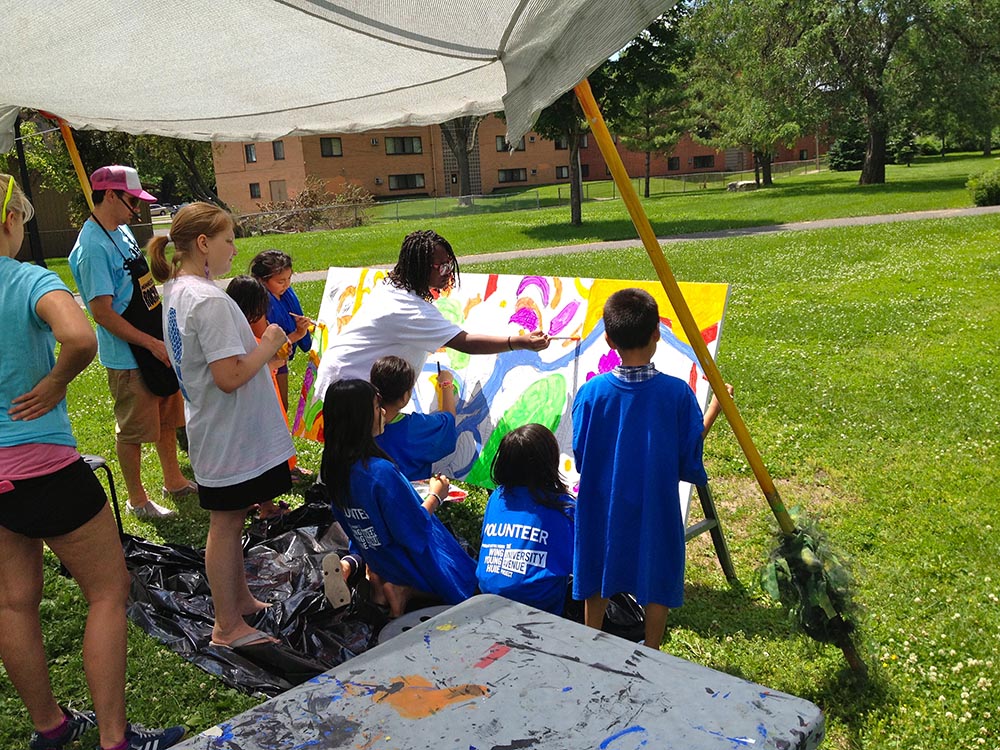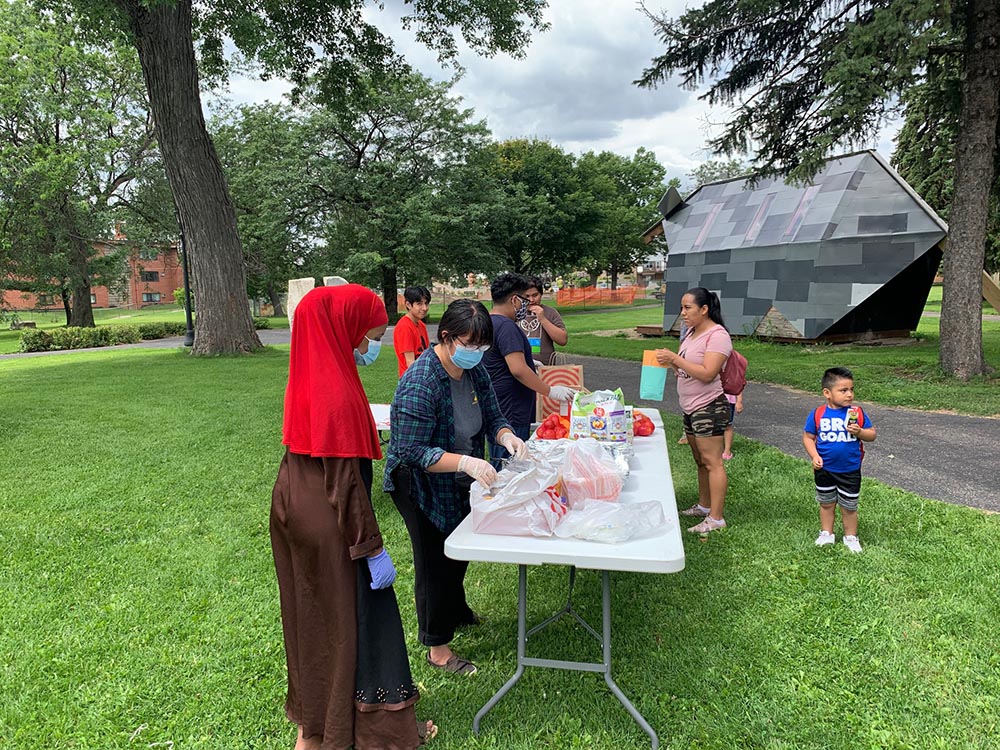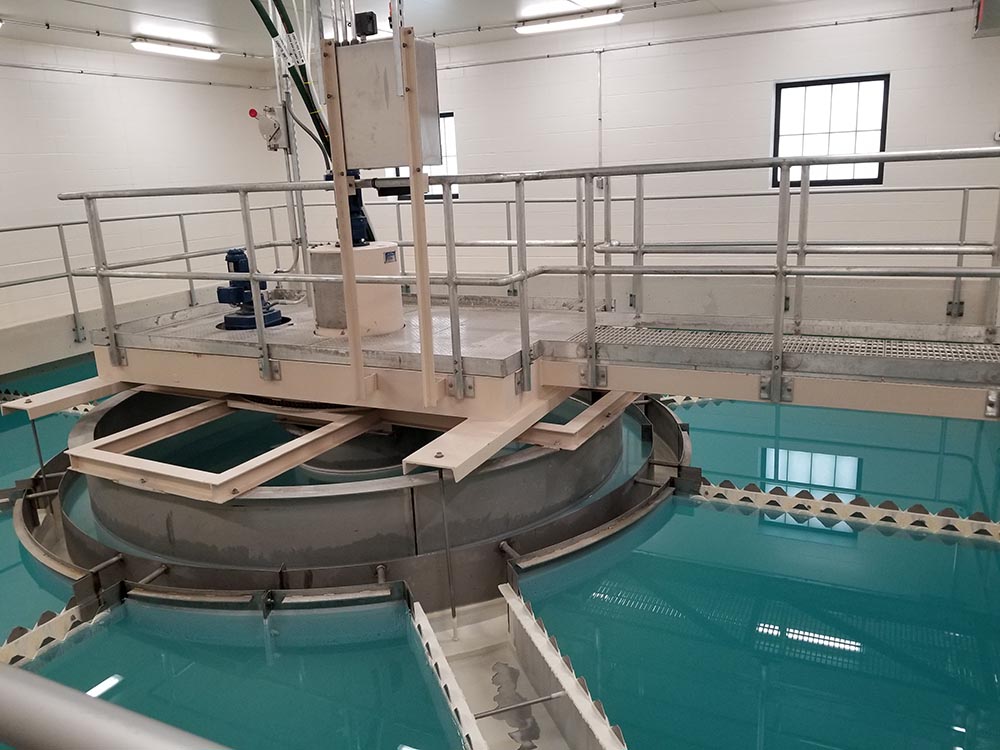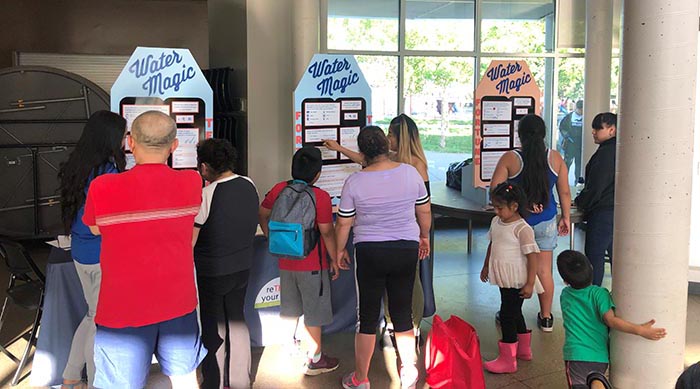Drinking Water Protection
- Drinking Water Protection Home
- About Us
- A-Z Index of Contaminants in Water
- Community Public Water Supply
- Drinking Water Grants and Loans
- Drinking Water Institute
- Drinking Water in Schools and Child Cares
- Drinking Water Revolving Fund
- Laws and Rules
- Noncommunity Public Water Supply
- Source Water Protection
- Water Operator and Certification Training
- Drinking Water Protection Contacts
Related Topics
- Annual Reports
- Drinking Water Risk Communication Toolkit
- Drinking Water Protection External Resources
- Fact Sheets
- Forms
- Invisible Heroes Videos: Minnesota's Drinking Water Providers
- Noncom Notes Newsletter
- Sample Collection Procedures (videos, pictures, written instructions)
- Waterline Newsletter
Related Sites
- 10 States Standards
- Clean Water Fund
- Health Risk Assessment – Guidance Values and Standards for Water
- Minnesota Well Index
- Water and Health
- Wells and Borings
Environmental Health Division
Waterline: Spring 2021

Editor:
Stew Thornley
Subscribe to The Waterline newsletter. An e-mail notice is sent out each quarter when a new edition is posted to the web site.
On this page:
- Minnesota AWWA Virtual Water Operators School Set for March 30 to April 7
- Public Art Saint Paul Continues through Pandemic
- Pipestone Receives EPA Aquarius Award
- Minneapolis Water Magic Project Continues Mission of ReThink Your Drink
- Drinking Water Needs Survey for 2021
- MDH to Propose Updates to Health Risk Limits Rule
- Words to Live By
- Opt-in Required to Remain on Mailing List for Printed Copies of Waterline
- Reminder to All Water Operators
- Calendar
Minnesota AWWA Virtual Water Operators School Set for March 30 to April 7
The Metro District of the Minnesota Section of American Water Works Association (AWWA) had its spring water operators school scheduled for March 30 to April 2, 2021. Because of the pandemic, it is instead working with other Minnesota AWWA districts on a virtual school. The Minnesota AWWA Water Operators School will consist of two hour segments from 8:00 to 10:00 a.m. on March 30-31 and April 6-7. Participants attending all sessions will receive eight contact hours. The registration fee for the entire school is $50. There is a limit of 250 participants. Depending on the demand, the school could be repeated with a combination of recordings from the first school and new content at a later date.
Go to top
Public Art Saint Paul Continues through Pandemic
 |
 |
Left: A 2014 workshop with children making a mural of the Mississippi River. Right: Distribution of kits in 2020.
Public Art Saint Paul has been holding workshops related to water through art-making activities at Western Sculpture Park for the past 10 years. The park is on Marion Avenue, southwest of the state capitol, an area with many residents dependent on the immediate neighborhood for recreational and cultural opportunities. “This population is low-income and the majority are people of color,” says Colleen Sheehy, the president and executive director of the non-profit organization. The workshops continued in 2020 despite the COVID-19 pandemic with Public Art Saint Paul modifying its art-and-water education to involve kits and instructions for children to take home to do the projects. We used raised-bed vegetable and herb gardens to teach about the importance of clean water for healthy food,” explained Sheehy. “We used a rain garden to talk about how water needs to be cleaned of impurities as it goes into our water and natural systems. We felt that even during COVID, it was important to maintain relationships and services to youth and families in the Rondo-Frogtown neighborhood in St. Paul around Western Sculpture Park.
"The children respond well to learning about water stewardship through these activities.”
Go to top
Pipestone Receives EPA Aquarius Award

Pipestone's new water treatment plant.
The city of Pipestone, Minnesota, has received an Aquarius Award through the U. S. Environmental Protection Agency’s Drinking Water State Revolving Fund (DWSRF) program for its excellence and leadership in the financing and construction of a new water treatment plant to address public health and environmental issues.
Pipestone needed to reduce the concentration of gross alpha emitters in its drinking water to protect public health. The new treatment plant was also designed to reduce the hardness of water leaving the plant, eliminating the need for residents to have water softeners in their home, which contribute to chloride concentrations at the city’s wastewater plant. Reducing the chloride concentration protects the environment in surface and groundwater downstream from the wastewater facility.
The Pipestone project was one of the first in Minnesota to deal with a wastewater issue by treating their drinking water supply. “By taking a holistic approach to solving their problem, the city was able to meet both their public health and environmental standards far more cost effectively,” said Chad Kolstad of the Minnesota Department of Health DWSRF program.
With the new water treatment plant, Pipestone has reduced gross alpha emitters to below detection levels and has allowed the city to continue to optimize and remove home water softeners as needed to meet their chloride wastewater discharge permit limit. In addition to the new water treatment plant, the project included the installation of watermains and new wells. The $15.4 million project was funded with a DWSRF loan of $8.4 million and a point source implementation grant of $7.0 million from the state.
The Aquarius Award recognizes exceptional projects for excellence in innovative financing, problem solving, and protection of public health and serves as an examples of the high level of innovation possible with the DWSRF.

The clarifier at the Pipestone plant.
Go to top
Minneapolis Water Magic Project Continues Mission of ReThink Your Drink

The Minneapolis Health Department leads the ReThink Your Drink initiative to raise awareness about the high rates of consumption of sugary drinks and to advocate for changes to policies, systems, and the built environment to combat the problem. As part of the initiative, the city partnered with a number of community groups to create the Water Magic project to talk with people regarding their views about tap water and how that influences what they choose to drink. The aim is to encourage Minneapolis residents, especially youth and people of color, to choose tap water over sugary drinks and bottled water.
The group designed Water Magic “Fortune Tellers” to use at community events to survey people about their opinions and attitudes regarding bottled and tap water. The results show that many people don’t trust the safety of tap water, which leads them to purchase bottled water and sugary drinks. “Negative experiences and a strong distrust of tap water were common among young people and within certain cultural and geographic communities,” said Moriah Maternoski of the health department, who noted that it was especially the case with new immigrants who had come to Minnesota from places where the tap water wasn’t safe to drink.
The city health department and its community partners are connecting with a broader group of people working on drinking water issues—including the University of Minnesota, RAFT (formerly Water Bar and Public Studio), Minneapolis Public Schools, Minnesota Department of Health, and the Neighborhood Hub, the Cultural Wellness Center, St. Mary’s Health Clinics, Nokomis East Neighborhood Association, Youth Coordinating Board, and Appetite for Change—to explore ways to address community concerns and promote the message that Minneapolis tap water is safe, affordable, convenient, and healthy.
More information:
Go to top
Drinking Water Needs Survey for 2021
The Minnesota Department of Health (MDH) will be reaching out to many public water systems in 2021 regarding the Drinking Water Needs Survey. This survey occurs approximately every five years. Minnesota's participation is important because the survey is used to determine each state’s allocation of federal funding for the Drinking Water Revolving Fund program. The survey will consider all projects the system may have in the next 20 years. MDH will survey 116 systems serving populations greater than 3,300. Most of the systems to be surveyed also participated in the 2015 version of the survey. This year’s survey will include new questions about water operator workforce and lead service lines.
Many systems have expressed concerns in recent years about losing good operators to retirement or other opportunities and having a hard time finding good qualified operators to replace them. This survey will allow information to be obtained statewide and nationally to provide data. Questions on the water operator workforce include:
- How many operators do you have?
- What responsibilities do they have?
- Do you have vacant positions?
- How will your need for operators change over the next 10 years?
- What roadblocks do you think will affect your ability to have enough qualified operators in the next 10 years?
The questions about lead service lines will focus on the number of service lines in a system and what is known about the construction materials of the service lines and connectors. The ownership of the service lines (system, property owner, or some shared ownership) will also be documented. Cost information for lead service line replacement projects in the past few years will also be useful. These questions are not intended to be a comprehensive accounting of all potential sources of lead in drinking water but to create a baseline of information on lead service lines in public water systems.
The needs survey is scheduled to take most of 2021 to complete. MDH’s coordinator is Corey Mathisen, who will be contacting the selected systems over the next several months to discuss information about the water system. Anyone with questions may contact Corey, corey.mathisen@state.mn.us, 651-226-5601.
Go to top
MDH to Propose Updates to Health Risk Limits Rules
The Minnesota Groundwater Protection Act of 1989 (Minnesota Statutes, Section 103H.201) authorizes the Minnesota Department of Health to develop and review health risk limits (HRLs) in cases of groundwater degradation.
HRL values provide guidance about the concentration of a groundwater contaminant that is likely to pose little or no risk to human health when the water is consumed as drinking water for up to a lifetime. HRLs are not enforced by MDH, but state environmental agencies have used these values to evaluate the quality of contaminated groundwater and to require treatment or remediation at times. They are also used by MDH drinking water programs as a starting point for evaluating potential risks from unregulated contaminants in drinking water.
HRLs are initially developed as “health-based water guidance values” (HBVs) by MDH toxicologists through a rigorous process involving examination of available scientific data for a chemical. Using methods previously published in rule (Minnesota Rules, 4717.7810 to 4717.7830), the toxicologists calculate HBVs for that chemical.
MDH periodically adopts HBVs into rule as HRLs through the rulemaking process under the Administrative Procedure Act (Minnesota Statutes, Chapter 14). MDH is currently considering amendments to the Health Risk Limit Rules (Minnesota Rules, 4717.7500 and 4717.860) in order to incorporate new or updated water guidance for groundwater contaminants. Outdated guidance would be repealed and replaced. MDH plans to post an initial request for comments about this consideration in the State Register on January 19, 2021. There will be another formal comment period at a later date.
More information:
Health Risk Limits Rules Amendments – Rules and Links
Go to top
Words to Live By
Seek first to understand, then to be understood.
—Stephen R. Covey
Some mistakes are too much fun to make only once.
Dare to be different on the side of simplicity.
—Ida Wozny, Sequim, Washington (letter to Dear Abby, July 11, 1986)
It isn’t what you don’t know that gets you into trouble; it’s what you know for sure that just isn’t so.
Go to top
Opt-in to be Required to Remain on Mailing List for Printed Copies of Waterline
The Minnesota Department of Health Waterline newsletter will continue to be available on-line:
Readers can sign up for email notifications each time a new edition is put on the web:
Whereas many on-line subscribers have opted out of receiving printed copies in the mail, others have continued to receive them.
Later this year, however, readers will have to opt-in to continue receiving a printed copy. Those who don’t will be dropped from the mailing list. The next Waterline should have a link to a website to sign up to continue to receive printed copies.
Readers can also opt-in by sending their mailing label (or a copy of it) from a current Waterline to Stew Thornley, MDH, P. O. Box 64975, St. Paul, Minnesota 55164-0975.
Go to top
Reminder to All Water Operators
When submitting water samples for analyses, remember to do the following:
- Take coliform samples on the distribution system, not at the wells or entry points.
- Write the Date Collected, Time Collected, and Collector’s Name on the lab form.
- Attach the label to each bottle (do not attach labels to the lab form).
- Include laboratory request forms with submitted samples.
- Do not use a rollerball or gel pen (the ink may run).
- Consult your monitoring plan(s) prior to collecting required compliance samples.
Notify your Minnesota Department of Health district engineer of any changes to your systems.
If you have questions, call the Minnesota Department of Health contact on the back of all sample instruction forms.
Calendar
Operator training sponsored by the Minnesota Department of Health and the Minnesota AWWA will be held in several locations this spring.
Register for schools and pay on-line:
Go to top